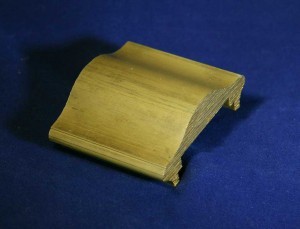Metal products, such as tubes and shafts, can be manufactured in a number of ways. Perhaps the most popular method is casting, which involves pouring liquid metal into a form that contains a hollow cavity. Although effective, this method can be costly and time-consuming since it consists of several processes, including melting and curing.
Those who are looking for ways to cut down on manufacturing cost should consider a method that produces results fast. One in particular is extrusion. This method involves pushing a metal through a die of a desired cross-section. There’s no melting, curing, and other extra processes that need to be done. Once the extrusion comes out of the other end of the machine, it’s ready for use
Other Benefits of Extrusion
Apart from its economic benefits, extrusion offers many other benefits. For one, because the process mainly relies on compression, the resulting extrusion can have very dense grain structure and excellent mechanical properties. The surface finish can be uniformly smooth, too.
When it comes to dimensional accuracy, extrusion can deliver. It can even yield complicated cross-sections with stunning precision and accuracy. Since the process can take several times faster than that of other methods, mass production of seamless tubes can be machined immediately.
Hot and Cold Extrusion
Like other metal manufacturing methods, extrusion has its fair share of cons. One of these is the risk of forming pores and voids that can weaken the material. To prevent this from happening, extrusion is done in two ways—hot and cold.
Hot extrusion is done at the metal’s recrystallization temperature. Meaning, the metal is still in a state where it is neither too solid not too loose; just enough to be conveniently fed into the die. This helps eliminate pores and voids as well as break up inclusions that can weaken the extrusion. Cold extrusion, on the other hand, is done at room temperature or near room temperature. Like any other cold manufacturing process, cold extrusion helps prevent oxidation, increase the metal’s strength, and produce better finish.
Choosing the Right Metal
Most non-ferrous metals can be extruded. Whether you want a silver, aluminum, or copper tube or shaft for your next project, you can simply have it extruded. If the tubes are for decorative purposes, however, consider opting for brass. It has a plethora of amazing characteristics that would surely fit your criteria. It is extremely durable as well.
To make sure that you will get the highest quality brass extrusions, turn to Rotax Metals for supplies. Having been producing metals for top metal users and suppliers in North America for over seven decades, you can count on them to provide you with the materials you need for your project. Whether you want raw metals or extruded ones, they can definitely deliver.
Sources:
Metal Extrusion Process and their application, TechMiny.com
Extrusion Process, TheMetalCasting.com


